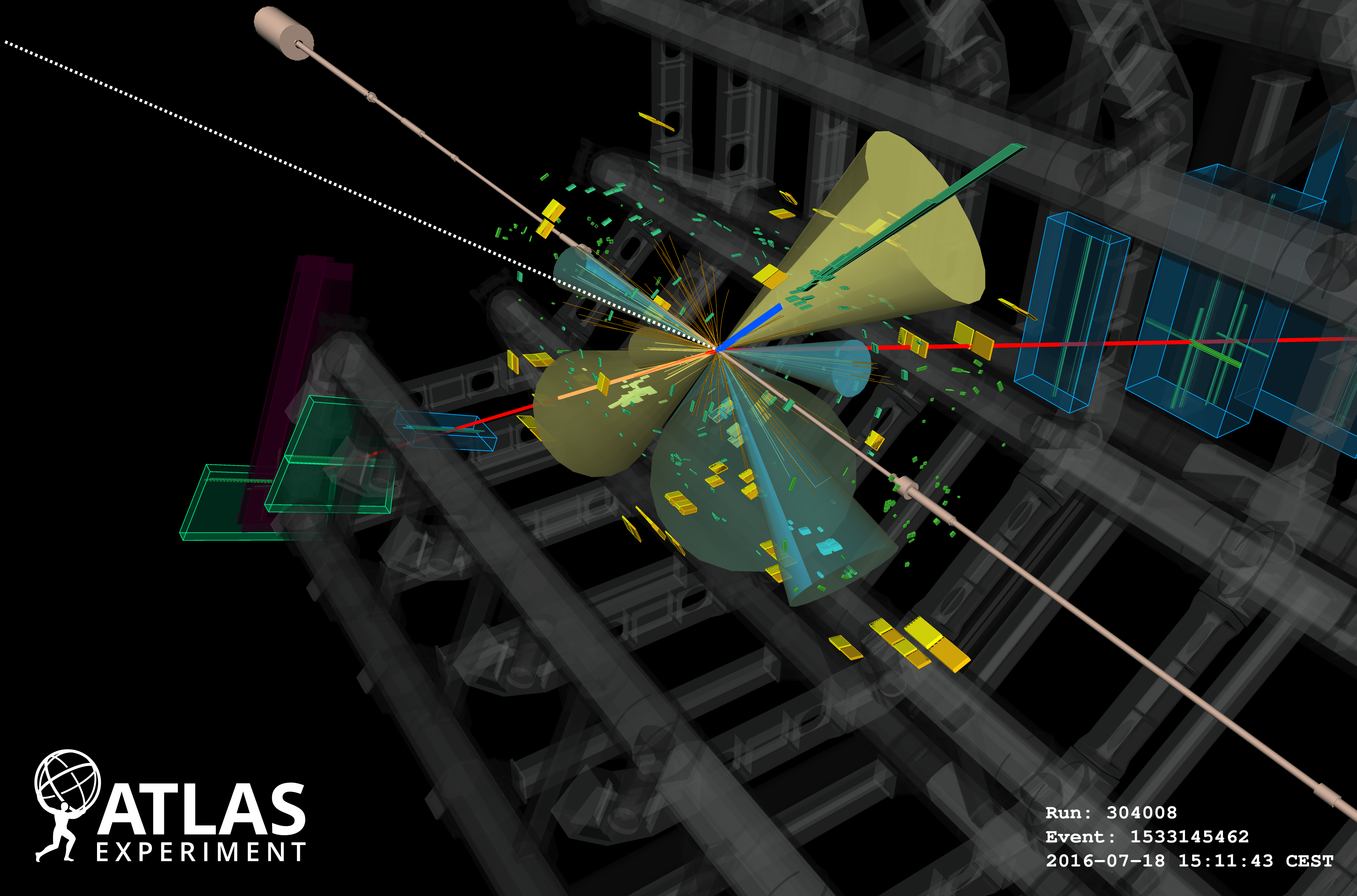- ATLAS and CMS detectors of the world's largest particle accelerator observe simultaneous production of four top quarks, the heaviest elementary particle, at CERN
- The Institute of Corpuscular Physics (IFIC, CSIC-UV) plays a leading role in the finding, considered key to search for new particles beyond the Standard Model
The Instituto de Física Corpuscular (IFIC), a joint center of the Consejo Superior de Investigaciones Científicas (CSIC) and the Universitat de València and belonging to the scientific-academic area of the Parc Científic of the same academic institution, has participated in the discovery of the first observation of the simultaneous production of four top quarks, the rarest process observed to date, and which produces the heaviest final state. This discovery has materialized thanks to the international scientific collaborations operating in the ATLAS and CMS experiments at the European Laboratory for Particle Physics (CERN). The top quark is the most massive elementary particle known, so it requires a lot of energy to be produced, and CERN's Large Hadron Collider (LHC), the world's largest and most powerful particle accelerator, is the only one capable of producing this phenomenon.
The top quark, one of the building blocks of everything we see in the universe, may hold the key to the mechanism that generates mass, since it is the heaviest elementary particle in the Standard Model, the theory that describes the visible universe. The study of the production of four top quarks is particularly important, since new particles or forces could alter the probability of producing four top quarks from the predictions of the Standard Model. It is a kind of 'Holy Grail' of the search for 'new physics'.
The top quark, one of the building blocks of everything we see in the universe, may hold the key to the mechanism that generates mass as the heaviest elementary particle in the Standard Model
The research groups of the Instituto de Física Corpuscular (IFIC, CSIC-UV) and the Instituto de Física de Altas Energías (IFAE) have played a major role in the search for rare processes with top quarks. Marcel Vos, CSIC researcher at IFIC, is the coordinator of the top physics group of the ATLAS experiment, while Aurelio Juste, researcher at IFAE, is the chairman of the editorial board that has reviewed the publication.
"We are very happy that this process has finally been discovered. Throughout my career I have been able to work on related phenomenological studies before the start of the LHC. It is a great satisfaction to finally witness this 'Standard Model discovery' after all these years," comments Vos.
The excitement that the finding provokes in the particle physics scientific community stems from the spectacular final state. With 4 top quarks, the remaining masses alone add up to 700 gigaelectronvolts (GeV), close to the maximum collision energy reached at the previous most powerful particle accelerator, the Tevatron at Fermilab (USA). The fact that the LHC can discover this process is a testament to the great power of this complex machine.
"We are very happy that this process has been discovered. Throughout my career I have been able to work on related phenomenological studies before the start of the LHC. It is a great satisfaction to finally witness this 'Standard Model discovery' after all these years", Marcel Vos, CSIC researcher at IFIC and coordinator of the top physics group of the ATLAS experiment
Relationship with the Higgs boson
During this research, the team has also searched for signs of new physical phenomena in relation to the Higgs boson. This new analysis has led them to constrain the interaction between the top quark and the Higgs boson to a limit of 1.8 times the prediction of the Standard Model. Finally, a slight excess in the rate compared to the Standard Model prediction has also been observed, which makes the result even more intriguing.
In many of the proposed Standard Model extensions the production rate of events with 4 top quarks increases. "With time it will be possible to confirm whether this is the first sign of an unexpected physics contribution to this process beyond the Standard Model, or whether more precise measurements in the future will agree with the model. For now, CMS, the other large experiment at the LHC, has also confirmed the observation," says the CSIC scientist.
The ATLAS project will continue to push the accuracy of this measurement during LHC Run 3, which is ongoing since 2022. Future studies will provide additional information about the observed signal, which will help determine whether it really agrees with the Standard Model or whether there are hints of new physical phenomena leading to a deeper understanding of the fundamental nature of the universe.
ATLAS Collaboration
The ATLAS Collaboration, one of the two large LHC experiments involving more than 5,000 scientists and technicians from around the world, had found hints of the simultaneous production of four top quarks in data obtained between 2015 and 2018 (Run 2). Now, after four years of data collection and five years of analysis, the ATLAS science team has revised the search by taking advantage of improvements in detector performance, new analysis techniques (including machine learning called Graph Neural Network) and a better understanding of the main background processes. All this brings the result, presented last week at the Moriond conference, to six sigmas of statistical confidence, confirming the finding.
In the media


